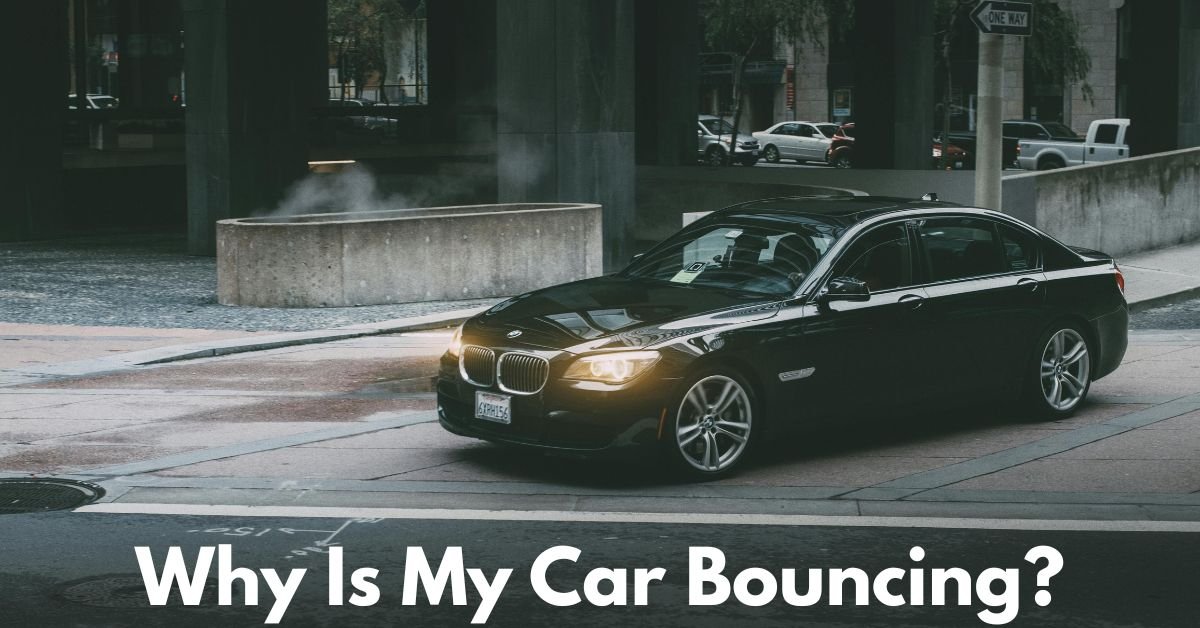Have you ever been driving along a relatively smooth road when suddenly your car starts feeling more like a trampoline than a vehicle? That annoying up-and-down motion — the bounce — isn’t just uncomfortable. It could be your car’s way of waving a red flag at you. But don’t worry, you’re not alone, and the causes are often easy to diagnose (and fix, if you catch them early enough).
So why is your car bouncing? Let’s break it down.
Why Is My Car Bouncing? Here’s What’s Really Going On
1. Worn-Out Shocks or Struts
One of the most common reasons for a bouncing car is worn-out shock absorbers or struts. The purpose of these suspension system parts is to maintain your tires in contact with the ground while absorbing impact from the road.
If your shocks or struts are damaged, leaking, or just old, they can’t do their job effectively — meaning every bump in the road gets transferred to the car’s body. That’s when you start bouncing around like you’re on a lowrider from the ’90s.
How to tell:
- Your car keeps bouncing after hitting a bump
- You hear clunking noises over potholes
- The front end dives when braking, or the rear squats when accelerating
- Visual inspection shows oil leakage on the shocks
2. Tire Trouble
Your tires are literally where the rubber meets the road, so if something’s off here, bouncing can result. It could be as simple as incorrect tire pressure — too much or too little can cause a bumpy ride. But more serious issues like uneven tire wear, imbalanced tires, or a broken belt in the tire can also lead to that dreaded bounce.
How to tell:
- Uneven tire tread
- Vibration at certain speeds
- One tire looking more “worn” than the others
- A bulge or bubble in the tire wall
Regular tire maintenance (like rotating, balancing, and checking pressure) can prevent this from happening in the first place.
3. Suspension System Issues
Beyond shocks and struts, your suspension system includes other components like springs, control arms, and bushings. If a coil spring breaks or a bushing wears out, the stability of your vehicle is compromised — and you guessed it, the bounce begins.
How to tell:
- The car sits lower on one side
- Clunking or creaking sounds from the suspension
- Handling feels off or unstable around turns
This isn’t something you want to ignore. A bad suspension doesn’t just affect comfort — it can seriously affect safety and control.
Must Read: Why Does My Car Squeak When I Reverse?

4. Unbalanced or Misaligned Wheels
If your car feels bouncy, especially at higher speeds, it might be due to unbalanced wheels or poor alignment. Unbalanced wheels cause the car to shake or bounce, especially when you’re cruising on the highway. Misaligned wheels, on the other hand, might cause your car to pull to one side and wear tires unevenly.
How to tell:
- Vibration in the steering wheel at speed
- Car pulls to one side
- Uneven tire wear
- Steering feels loose
5. Brake Issues
Believe it or not, your brakes can also cause a bouncing sensation. If your brake rotors are warped, you might feel a bouncing or pulsing sensation when braking. This is especially noticeable when slowing down from high speeds.
How to tell:
- Vibrations or bouncing when applying brakes
- Squealing or grinding noises
- Longer stopping distances
So What Should You Do?
If your car is bouncing more than it should, the best move is to get it inspected by a trusted mechanic. Ignoring the issue could lead to worse problems — including reduced handling and increased wear on other components (like your tires or even your steering system).
Here’s a quick checklist to help narrow it down before you head to the shop:
- Check tire pressure and tread
- Inspect for fluid leaks near shocks/struts
- Listen for odd sounds over bumps
- See if the car continues to bounce after you push down on the hood (it shouldn’t)
The Bottom Line
A bouncing car might not seem like a big deal at first, but it’s almost always a sign that something isn’t working right. Whether it’s your shocks, tires, or something deeper in your suspension, it’s worth checking out. Smooth rides are more than just a luxury — they’re essential for safety and performance.
So next time your car starts bouncing like it’s got a mind of its own, don’t just turn up the music and ignore it. Your vehicle is attempting to communicate with you. Listen to it — your spine (and your wallet) will thank you.
